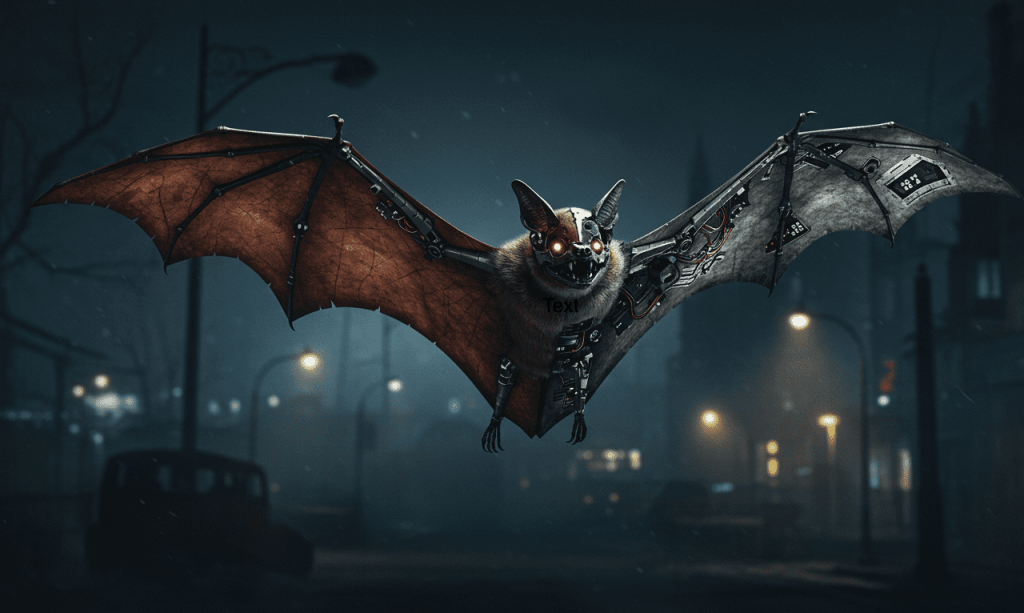New drones mimic bats to weather the darkest storms

Credit: https://futurewartech.com/bat-inspired-ai-powered-echolocation-technology-helps-drones-navigate-in-darkness/
As climate driven storms grow more frequent, scientists are taking cues from bats and developing drones that can echo locate through dark storms and aid rescue missions when visibility or power is lost, reported AP news on 30 October.
In a dimly lit laboratory at Worcester Polytechnic Institute (WPI), as fog swirls around students launching palm sized aerial robots, researchers are preparing for natural disaster scenarios where conventional drones would fail. “We all know that when there’s an earthquake or a tsunami, the first thing that goes down is power lines. A lot of times, it’s at night, and you’re not going to wait until the next morning to go and rescue survivors,” said assistant professor Nitin Sanket. “So, we started looking at nature. Is there a creature in the world which can actually do this?”
The answer, the team concluded, lies with bats – creatures that navigate in near total darkness using echolocation. The WPI team, with funding from the National Science Foundation, is developing small, inexpensive, energy efficient aerial robots that can fly where current drones can’t.
Sanket and his students designed drones that mimic bat behaviour, using ultrasonic sensors to emit high frequency sound pulses and detect reflected echoes to identify obstacles, even in darkness, fog, or smoke.
The inspiration also comes from real world drone rescue efforts.
Last month, emergency workers in Pakistan used drones to find people stranded on rooftops by massive floods. In August, a rescue team used a drone to find a California man who got trapped for two days behind a waterfall. And in July, drones helped find a stable route to three mine workers who spent more than 60 hours trapped underground in Canada.
“Currently, search and rescue robots are mainly operational in broad daylight,” said Sanket. “The problem is that search and rescues are dull, dangerous and dirty jobs that happen a lot of times in darkness.”
In one demonstration, the small drone was flown in almost darkness [only a faint red glow] through fog and even a snow machine simulation. When it approached a clear Plexiglas wall, it repeatedly stopped and backed away. The team said this validated the obstacle detection method even under low visibility.
The researchers point out several shortcomings of existing drones in disaster conditions and said many are large, expensive, manually operated and rely on visual sensors or GPS that may fail in darkness, smoke or storms. “Current robots are big, bulky, expensive and cannot work in all sorts of scenarios,” said Sanket.
At WPI the new design fits in the palm of a hand, is built mostly from hobby grade parts, and uses the ultrasonic bat inspired sensor to navigate where vision-based drones cannot.
However, there are still technical challenges. The propeller noise of the drone was found to interfere with its own ultrasound echoes, forcing the team to 3D print noise dampening shells and apply artificial intelligence sound filtering. “Bats are amazing,” Sanket said. “We are nowhere close to what nature has achieved. But the goal is that one day in the future, we will be there, and these will be useful for deployment in the wild.”
Beyond a single bat inspired drone, the long-term vision is the deployment of autonomous swarms of such robots capable of coordinating search patterns in complex environments. Associate professor Ryan Williams of Virginia Tech explained, “That type of deployment, autonomous drones, that is effectively nil.”
Williams’ team uses historical data from thousands of missing person cases to model likely behaviours and better localise drone search trajectories. “And then we used that model to better localise our drones, to search in locations with higher chances of finding someone,” he said.
In storm hit or disaster zones, darkness, power loss, smoke, floodwater and debris combine to make standard aerial search tools less effective. The bat inspired drones aim to plug that gap, offering a means of navigating visually denied environments such as beneath collapsed roofs, at night, or in heavy smoke and rainfall.
While the technology is promising, WPI’s team accept that they are still well behind the capabilities of bats, which among other feats, can detect tiny objects like a human hair from several metres away.
AP news, Maghrebi.org
Want to chase the pulse of North Africa?
Subscribe to receive our FREE weekly PDF magazine














